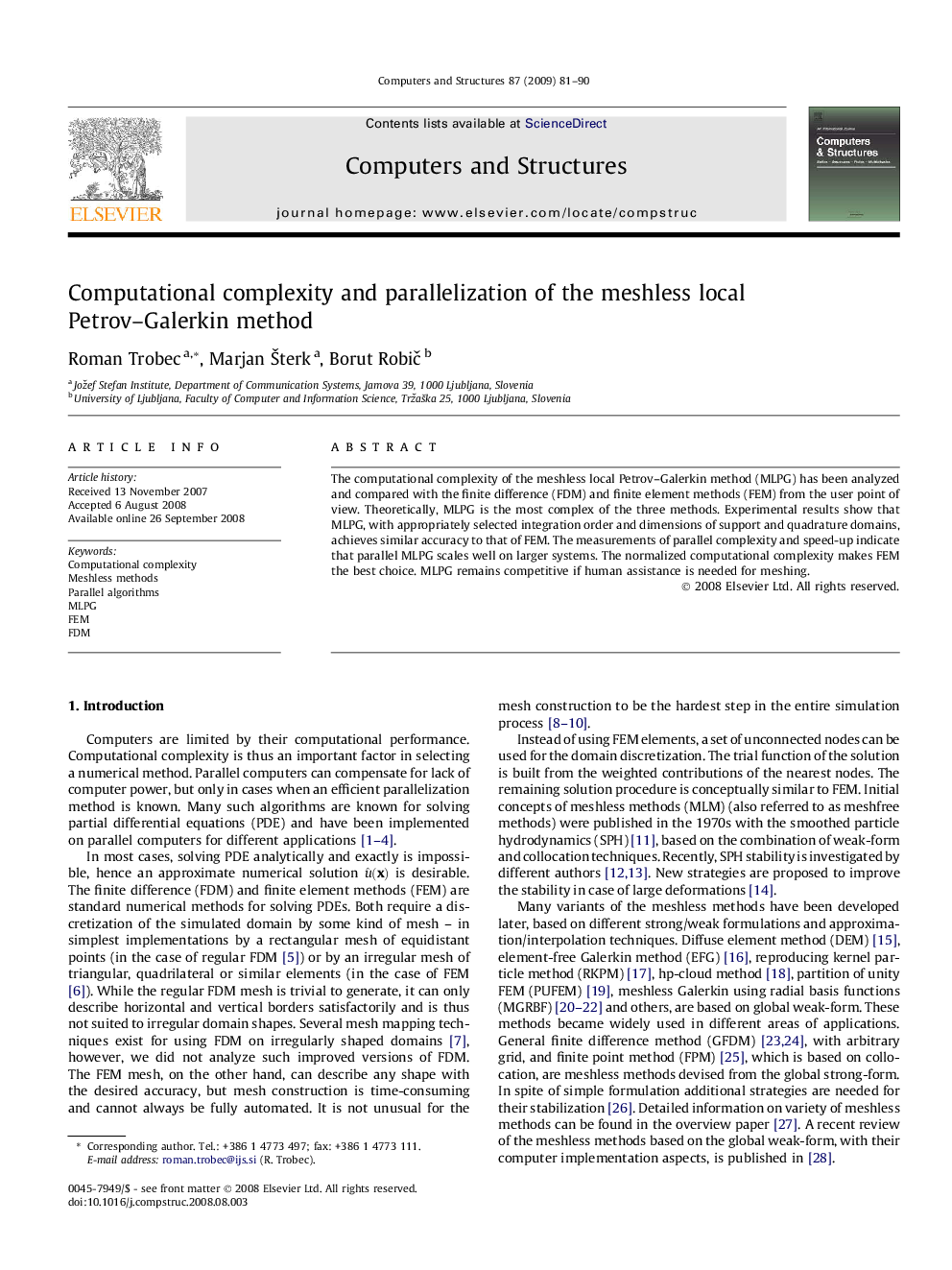| Article ID | Journal | Published Year | Pages | File Type |
|---|---|---|---|---|
| 511209 | Computers & Structures | 2009 | 10 Pages |
Abstract
The computational complexity of the meshless local Petrov–Galerkin method (MLPG) has been analyzed and compared with the finite difference (FDM) and finite element methods (FEM) from the user point of view. Theoretically, MLPG is the most complex of the three methods. Experimental results show that MLPG, with appropriately selected integration order and dimensions of support and quadrature domains, achieves similar accuracy to that of FEM. The measurements of parallel complexity and speed-up indicate that parallel MLPG scales well on larger systems. The normalized computational complexity makes FEM the best choice. MLPG remains competitive if human assistance is needed for meshing.
Related Topics
Physical Sciences and Engineering
Computer Science
Computer Science Applications
Authors
Roman Trobec, Marjan Šterk, Borut Robič,
